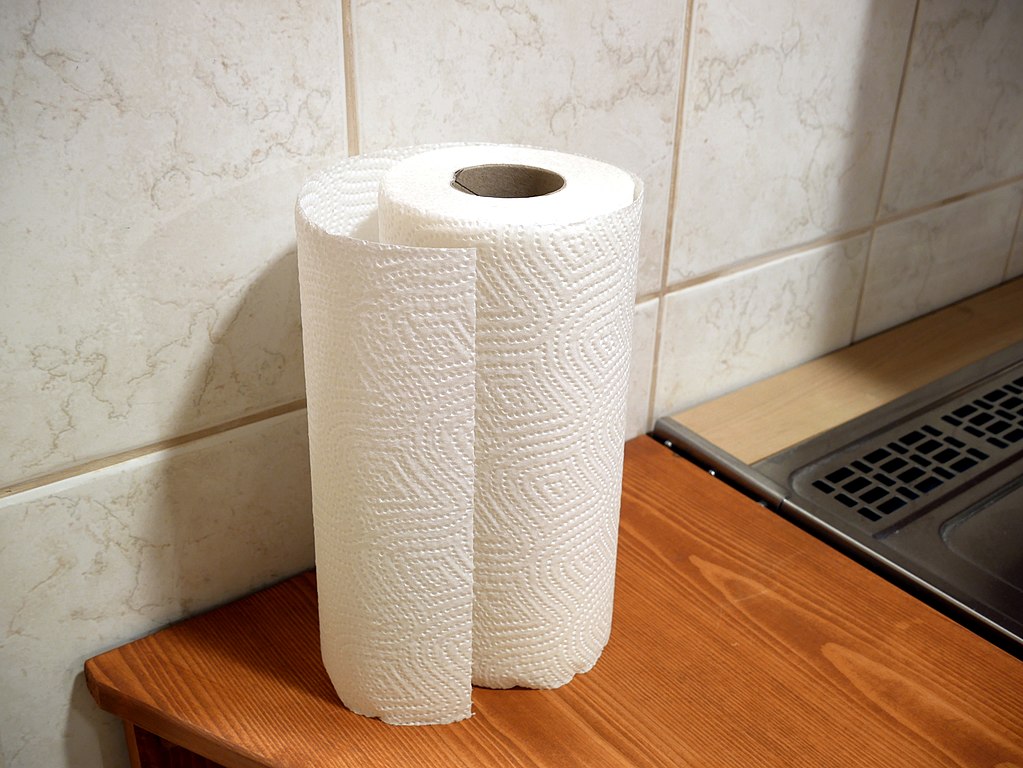
51,000 Trees Are Cut Down Every Day To Make Paper Towels. Let’s Break This Habit
- Thomas Nelson
- August 9, 2022
- Sustainable Living
- 0 Comments
Picture this: you’re at home cooking dinner and you spill a little bit of sauce or oil on your counter. What do you do? If you’re like most Americans, you reach for a paper towel to easily clean up the spill. And what’s the harm in that? Maybe the packaging says they’re eco-friendly, made from recycled paper, or maybe made from sustainably grown trees. But is the practice of using paper towels really so innocent?
In this article, we’re going to take a deep dive into the environmental impact of paper towels, how paper towels branded as being eco-friendly stack up, how to pick the most environmentally friendly washcloths. Let’s dig in.
The environmental impact of paper towels
There are numerous types of paper towels on the market, and the type of paper towel you pick plays a large role in its overall environmental impact. Let’s quickly break it down.
- It takes 17 trees and 20,000 gallons of water to make 1 ton of paper towels.
- Every day, 3,000 tons of paper towel waste is created
- 51,000 trees are cut down every day for our paper towel habit
- 60 million gallons of water are required for our daily paper towel habit
- When paper towels decompose, they produce methane, a potent greenhouse gas
- Paper towels that are thrown away occupy space in our landfills
- Paper towels, napkins, paper plates, and paper tissues can never be recycled and made into a new product
- One pro: Most paper towels can be composted in your home compost bin
Are eco-friendly paper towels okay?
If you’re a paper towel addict, there are options for you to be at least a little bit more eco-friendly with your paper towel use. Paper towels made from recycled paper are a better option. If every household in the United States replaced just one roll of virgin paper towels with recycled or bamboo paper towels, we’d save 544,000 trees per year.
But the issue of disposal isn’t addressed by picking a more eco-friendly paper towel. As I mentioned earlier in this article, the decomposition process for paper towels releases methane, which is a potent greenhouse gas that contributes to climate change. It also occupies space in our landfills, which is an important consideration given that U.S. landfills are on track to be completely full within the next 18 years.
If you can’t live completely without paper towels, these options are better. But they’re not the best. Washcloths that can be reused hundreds, if not thousands of times, are the way to go if you really want to reduce the impact of paper towels.
Read more: 3 Eco-Friendly Alternatives To Toilet Paper
Are washcloths eco-friendly?
It’s an easy argument to make that if you want to reduce your environmental impact, grabbing a washcloth instead of paper towels is a good option. But we should do our due diligence here. What are the environmental impacts of washcloths?
When I sat down to research this article, I was surprised by how scarce information is about washcloths and their environmental impact. Washcloths need to be washed after several uses, depending on how soiled they become. This requires water, energy, and detergent. The way you wash, what you wash them with, and the way you dry them will determine how eco-friendly your washcloths really are.
If you wash them in hot water with an environmentally toxic soap and then put them in the dryer, you are maximizing their environmental impact. If you wash them by hand with minimal, eco-friendlier soap and then hang them to dry, you minimize their environmental impact. There are a lot of variables to consider.
Another consideration is microfiber shedding. If your washcloths have any plastic components, like polyester, these can be shed during the washing process, causing harm to the environment. Choosing a natural, sustainable cloth can reduce the environmental impact from fiber shedding.
One big benefit of the washcloth is just how many times it can be used before it totally wears out. A high quality washcloth used daily can last 5 or more years. You can get upwards of 2,000 uses out of each washcloth before it begins to fray and wears out. And if you’re diligent about routinely washing your washcloths, they won’t pick up a lingering bad smell.
Picking the most eco-friendly washcloth
Picking the most eco-friendly washcloth requires a little bit of knowledge and research. Many websites engage in affiliate marketing to different brands to make a buck, but we’d rather just empower you with the information you need to make a choice and call it a day. I have a handful of recommendations for finding the most sustainable, eco-friendly washcloths to replace your paper towel habit.
- Look for sustainable fabrics, like recycled cotton, organic hemp, organic linen, or TENCEL lyocell
- Find brands that adhere to certifications like fair trade, GOTS, OEKO-TEX, C2C, RCS & FSC and place sustainability at the forefront of their business practices
- Avoid unsustainable, environmentally harmful fabrics like conventional cotton, polyester, nylon, rayon, and acrylic
If you stick with these guidelines, you should find a pretty high-quality, environmentally friendly washcloth.
Read Next: We Flush 27,000 Trees Every Day. It’s Possible To Live Without Toilet Paper Forever

